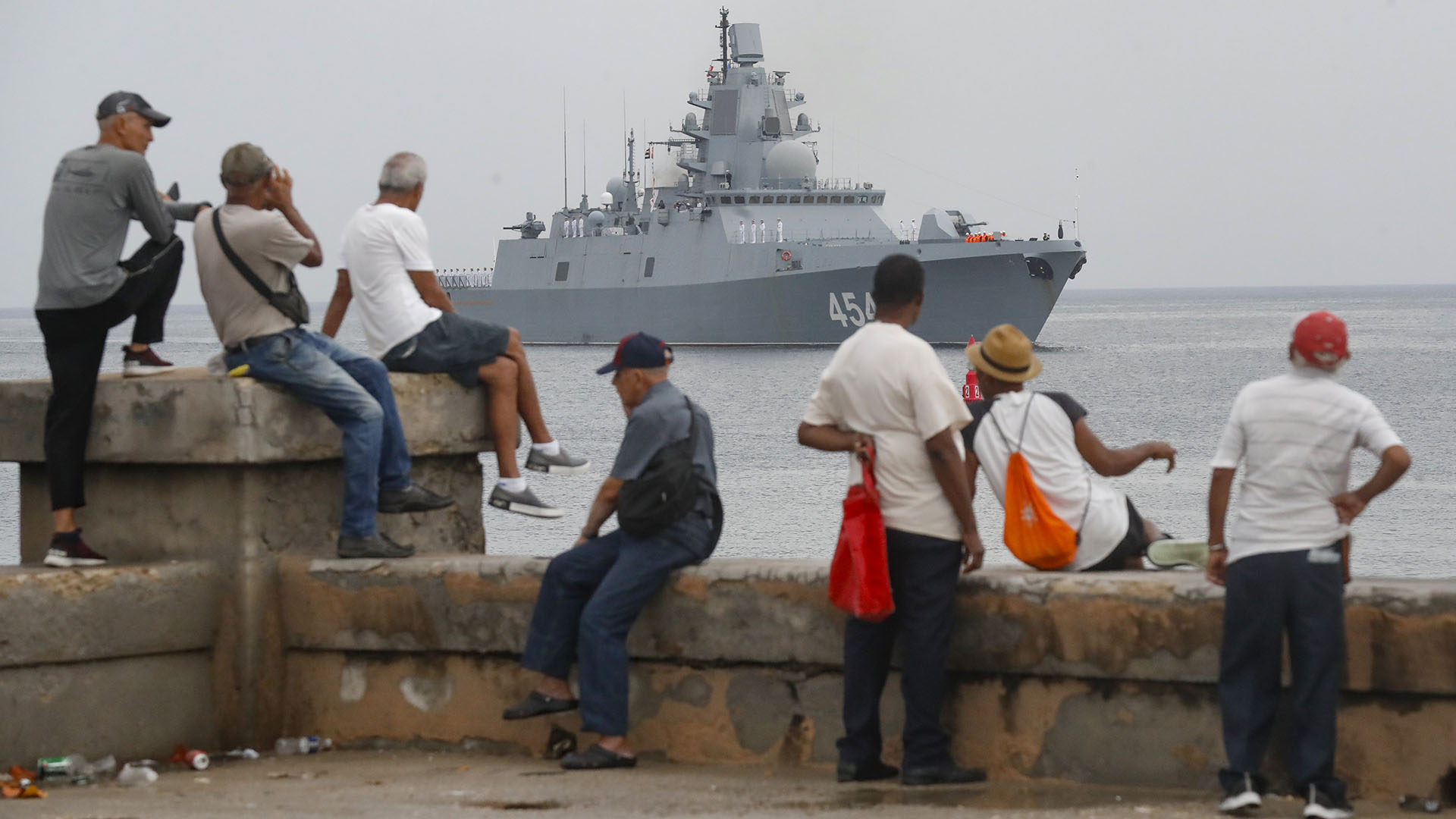

Someone in the Kremlin must have opened Marko Ramius’ letter because three Russian ships and one submarine are conducting naval exercises in the Caribbean this week.
In response, the U.S. Navy has sent at least one P-8 Poseidon anti-submarine aircraft to keep tabs on the Russians and has the destroyers USS Truxtun, USS Donald Cook and USS Delbert D. Black patrolling in the region, a spokesperson for U.S. Northern Command, or NORTHCOM, said on Thursday.
“In accordance with standard procedures, we’ve been actively monitoring the Russian ships as they transit the Atlantic Ocean within international waters,” NORTHCOM said in a statement. “Air and maritime assets under U.S. Northern Command have conducted operations to ensure the defense of the United States and Canada. Russia’s deployments are part of routine naval activity which pose no direct threat or concern to the United States.”
Separately, the Los Angeles-class fast attack submarine USS Helena has arrived at Guantanamo Bay, Cuba, as part of a “routine port visit,” U.S. Southern Command announced on Thursday. While the Helena’s transit had been previously planned, its arrival in Cuba is fortitudinous should the Russians pull any Crazy Ivans.
Russian official media recently announced that the four ships would arrive in Havana on Wednesday to extend friendly greetings between the two countries. Only two of the ships are frontline warships, the frigate Admiral Gorshkov and cruise missile submarine Kazan. The ships are traveling with the tanker Pashin, and the rescue tug Nikolay Chiker.
Subscribe to Task & Purpose today. Get the latest military news and culture in your inbox daily.
The Admiral Gorshkov and Kazan conducted battle drills using high precision missiles on their way to Cuba, Russia’s defense ministry announced on Tuesday. The Pentagon has not confirmed information shared on the website marinetraffic.com that the Nikolay Chiker came within 30 miles of the Florida coast that day.
The inclusion of a Russian tug boat in the flotilla has drawn some online scorn but at least one naval expert pointed out on X that tugs — which double as icebreakers — are a routine part of Russian naval operations due to the often-unsuitable nature of ports their warships may visit.

“People often joke that the #Russian navy needs to take ‘tugs’ along on long voyages,” wrote H.I. Sutton, who tweets under the handle @Covertshores. “Actually it is a smart move and the tugs are for more than just towing. They are support ships. Logistics and support are key, plus Russia doesn’t have a strong global network of equipped friendly ports. Among many tasks, they can perform intelligence gathering activities. This is one aspect of the Russian navy I don’t think is as funny as people hope it is. The other is its submarines.”
Diplomatic relations between the United States and Russia have sunk to Cold War levels of antipathy since Russia launched its full-scale invasion of Ukraine in February 2022. The United States has provided Ukraine with $51.2 billion in military assistance since then.
This marks the seventh time since 2008 that the Russian navy has deployed to the Caribbean, said Dara Massicot, a senior fellow with the Russia and Eurasia Program for the Carnegie Endowment for International Peace.
Although the number of Russian vessels currently in the Caribbean is higher than it has been in the past and the Russians typically don’t announce where their submarines are, this deployment is not unusual, Massicot told Task & Purpose.
This is the time of year when the Russian navy sends its fleets on training missions, Massicot said. Around this time in 2023, the Russians deployed a surface action group off the coast of Hawaii.
“They, of course, appreciate any secondary benefits, like these deployments being hyped up or sending this kind of coercive signal; but I don’t think that’s the primary intent here because they are pretty routine,” Massicot said. “I look at how they’re communicating where they’re going; who’s coming with them; and what they’re doing, which is a simulated missile launch, and this is all very routine language on the Russian side. And the U.S. press releases have also been very routine.”
Massicot added that the Russian navy needs months to plan for deployments of this size and distance, so it is not coming as a result of a recent event somewhere in the world.
Over the past decade, the Russian navy has prioritized building submarines over surface vessels. As a result, Russia continues to produce quiet and capable submarines, like the Kazan.
“We’ve had senior U.S. admirals and generals say that Russia is moving to a persistent presence in the Atlantic and the Pacific with this particular type of submarine,” Massicot said. “But I’m pretty confident in the [U.S. Navy’s] 2nd and 4th Fleets’ ability to monitor this and track it.”
As of yet, there has been no word on whether or not the Russians plan to listen to U.S. rock’n’roll while conducting missile drills, or if U.S. listening posts heard any sound besides laughter as the Russians sailed to Havana, where the sun is warm, and so is the comradeship.
The latest on Task & Purpose
- 82nd Airborne paratroopers cut down a 101st flag from an iconic bar on D-Day
- Navy fires USS Somerset’s commanding officer following investigation
- Two ex-U.S. soldiers met in Ukraine, then went on ‘international crime spree’
- A combat controller earned a secret Air Force Cross for battle with Russian mercenaries
- Fort Moore renames five gates for battlefield heroes like Alwyn Cashe
